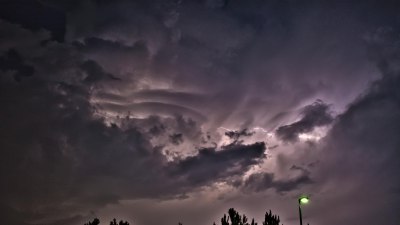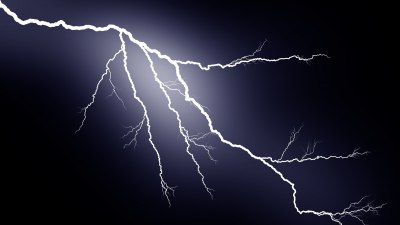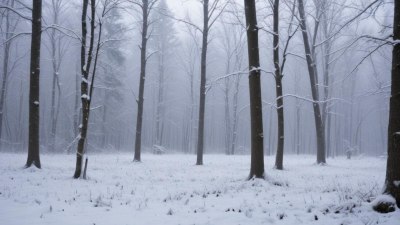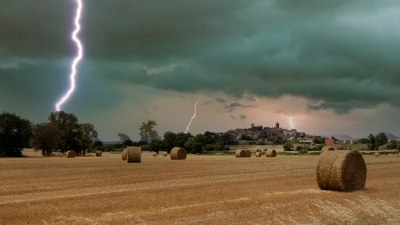What Happens to Storm Clouds at Night and Why They Sometimes Vanish
Explore the fascinating dynamics of storm clouds at night and understand why they sometimes disappear.

Storm clouds are a captivating phenomenon, particularly in the context of nightly atmospheric changes. At night, several factors contribute to the transformation, disappearance, or persistence of storm clouds. In this article, we'll delve deep into the science behind what happens to these clouds after sunset, focusing on their behavior, the underlying atmospheric conditions, and the reasons they may vanish.
The Nature of Storm Clouds
Storm clouds, primarily cumulonimbus clouds, are massive, vertically-developed clouds known for producing severe weather, including thunderstorms, heavy rains, and even tornadoes. They thrive on warm, moist air and can rise several kilometers into the atmosphere, creating highly turbulent conditions. Understanding how they behave during the night is vital for predicting weather patterns and enhancing our knowledge of meteorological processes.
Sunset and Temperature Inversions
As the sun sets, the Earth's surface begins to cool rapidly, triggering a critical change in temperature that affects storm clouds. Initially, the atmosphere's heating from the sun causes convection currents, leading to the formation of storm clouds. However, as night falls, the surface cools more quickly than the air above. This creates a temperature inversion, a situation where the warmer air from above traps the cooler air near the surface, often causing stability in the atmosphere.
During this inversion period, cumulonimbus clouds may start to dissipate. The cooling of the air reduces the amount of moisture that can be held, leading to the condensation of water vapor and potentially resulting in cloud formation breaking apart. In situations of rapid cooling, this dissipation can happen quite quickly, leading to a dramatic reduction in cloud cover.
Humidity Levels and Cloud Disappearance
The amount of humidity in the atmosphere is another critical factor influencing the fate of storm clouds during the night. After sunset, humidity levels can either rise or fall, significantly impacting cloud persistence. If the humidity near the surface rises while the air aloft remains drier, it could promote the formation of low stratus clouds or fog, shifting the cloudiness into a different form. However, if the humidity drops significantly or remains stable, storm clouds may not sustain themselves.
In the event of stable atmospheric conditions at night, existing storm clouds can completely dissipate, leaving little to no trace of their daytime presence. These processes highlight the intricate relationships between temperature, humidity, and the life cycle of clouds.
The Role of Wind Shear
Wind shear, or the change in wind speed and direction with altitude, can also play a significant role in the fate of storm clouds at night. During the day, strong updrafts fuel storm development, but as night approaches, these updrafts weaken due to the cooling temperatures and decreased surface heating. This reduced vertical motion can contribute to the dissipation of clouds.
Additionally, wind shear can lead to the tilting of storm clouds, altering their structure. In some cases, this can result in the storm clouds becoming separated from their moisture source, making it difficult for them to sustain themselves. Thus, by nightfall, the combination of diminished updrafts and changes in wind dynamics can lead to the rapid disappearance of storm clouds.
Nocturnal Cloud Development
Interestingly, while many storm clouds dissipate at night, some new cloud types can form. Nocturnal thunderstorms may develop under specific circumstances, typically driven by geographical features such as mountains or water bodies that can induce localized heating. These nocturnal storms can occur due to the interaction of warm, moist air from the ground rising into cooler, upper-level air.
Additionally, in regions known for their mountain ranges, nighttime cloud formations can be influenced by the orographic effect, where moist air is forced to rise over the terrain, leading to the development of clouds and possibly precipitation even during the night. Thus, while storm clouds may vanish in many regions after dark, some areas experience a different atmospheric dynamic that leads to the formation of new clouds and possibly even further storms.
The Influence of Local Geography
The local geography significantly influences how storm clouds behave at night. Areas with large bodies of water can create stabilization effects. Water holds heat better than land, leading to milder nighttime temperatures, which can help maintain some cloud cover. Conversely, landlocked areas may experience more substantial cooling at night, increasing the likelihood of cloud dissipation.
Furthermore, urban areas can create localized weather phenomena known as urban heat islands, where the concentration of buildings and infrastructure retains heat, leading to different nighttime cloud dynamics compared to surrounding rural areas. This can result in a distinctive meteorological signature, often leading to a difference in the stability and longevity of storm clouds at night in urban environments.
In conclusion, the fate of storm clouds at night is dictated by a complex interplay of atmospheric conditions. As the sun sets, temperature inversions, humidity levels, wind shear, geographical features, and local weather patterns dictate whether storm clouds will dissipate or linger into the night. Understanding these dynamics can enhance our knowledge of meteorological changes and improve forecasting models, aiding in anticipating local weather patterns. By studying the life and death of storm clouds, we can appreciate the delicate balance within our atmosphere, revealing the intricate connections that govern our climate.











